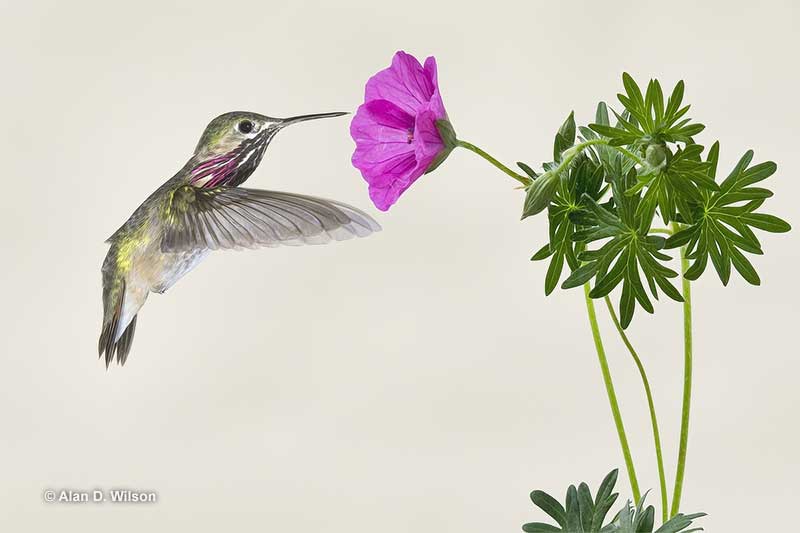
Florida is a wonderful place for birds! Storks, egrets, and lots of other waterbirds thrive in the state’s many wetlands and warm climates.
Those mild conditions also attract other birds and hummingbirds, too! Go birding in Florida, and you’ll probably see hummingbirds. Take a close look and you might even see several hummingbird species.
Which hummingbirds live in Florida? How can you see them? See this article to learn all about the hummingbirds of Florida!
Most Common Hummingbirds in Florida
In Florida, the Ruby-throated Hummingbird is the most common hummingbird species. No matter where you go birding in Florida, this is the expected hummingbird. However, it’s not the only hummingbird species in Florida.
An incredible 12 hummingbird species have been found in Florida! Most are rare vagrants or uncommon visitors, but several show up every year.
To make a list of the most common hummingbirds in Florida, we used eBird data to arrange the hummingbird species from most common to least common. To help you see and identify them, we also included field marks and other key information about these special birds!
Ruby-throated Hummingbird
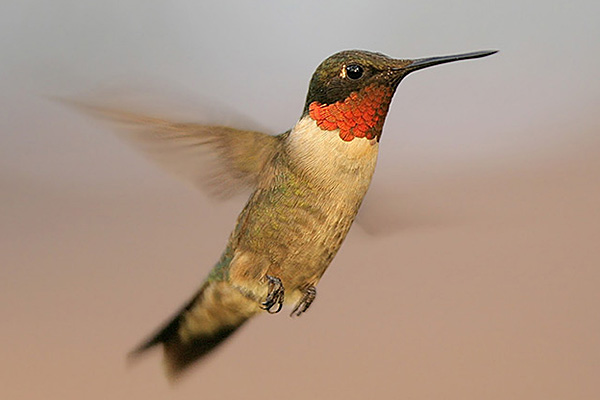
Photograph © Greg Lavaty.
Scientific name: Archilochus colubris
Length: 3.75 inches
Wingspan: 4.5 inches
The Ruby-throated Hummingbird is the common, small hummingbird of eastern North America. Although other, rare species can occasionally occur, at eastern feeders, this species is the de-facto hummingbird.
Males are green above, have some olive on their belly, a white chest and semi-collar, and a tiny white spot behind each eye. True to their name, they also have a beautiful, ruby-red throat. However, as with most hummingbirds, those colors only show in certain lighting.
They also have a dark, slightly forked tail, and a long, needle-like beak. Female Ruby-throated Hummingbirds look quite different from their male counterparts! They are also green above but have a grayish throat, and white tips on their tail.
Ruby-throated Hummingbirds are common in woods, second growth, and gardens near woods from central and southern Canada to Florida and Texas. Although they feed on their own, several can congregate at feeders, especially during migration! They also feed from a wide variety of small flowers.
Key identifications:
- Red throat and white semi-collar.
- Dark, slightly forked tail.
- Females have a white spot behind their eyes, a hint of a dusky mask, and the tail of perched birds is longer than their wingtips.
Black-chinned Hummingbird
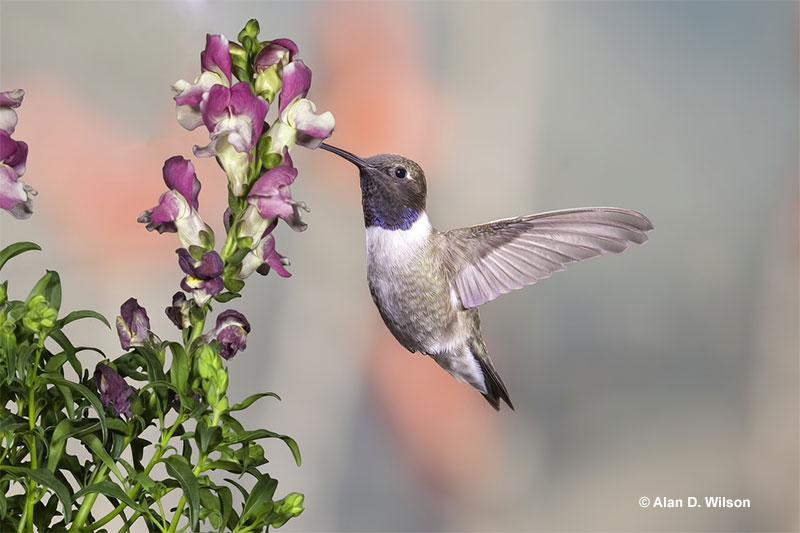
Scientific name: Archilocus alexandri
Length: 3.75 inches
Wingspan: 4.75 inches
Black-chinned Hummingbirds replace the Ruby-throated Hummingbird west of the Rocky Mountains and in parts of central and southern Texas. They are green above and dusky gray below with a white semi-collar and small pale spot behind their eyes.
Males have a beautiful dark purple throat with a black chin, and a black, slightly forked tail. Females have a dusky gray throat, grayish crown, hint of a dark mask, and a slightly forked tail with white tips on the outer tail feathers.
On perched females, the wings nearly reach the end of their tail. These pretty hummingbirds are common at feeders from parts of southern British Columbia to northern Mexico. They also feed from a variety of small tubular flowers and live in riparian zones, brushy habitats, and gardens.
In late summer, Black-chinned Hummingbirds migrate to western Mexico for the winter. However, some also winter at feeders from Louisiana to Florida.
Key identifications:
- Dark throat with a white semi-collar.
- Grayish belly and black, slightly forked tail.
- On females, look for the grayish crown, long, slightly curved beak, and rounded wing tips that nearly reach the end of their tail.
Rufous Hummingbird
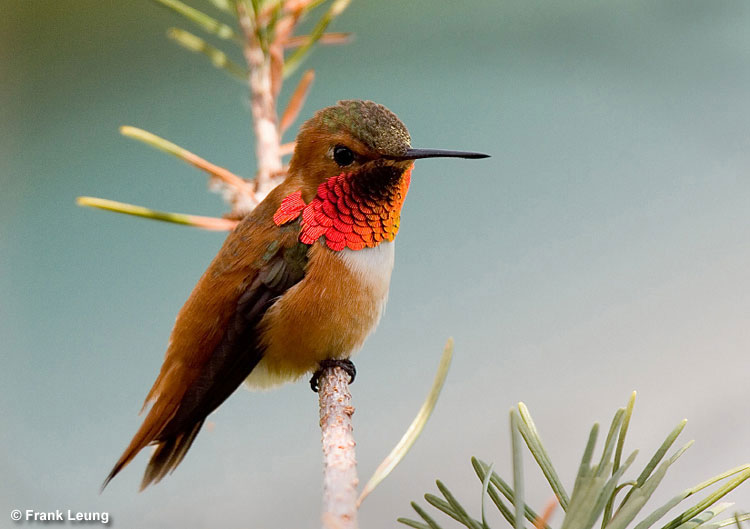
Scientific name: Selasphorus rufus
Length: 3.75 inches
Wingspan: 4.5 inches
Rufous Hummingbirds breed in the coniferous forests of the Pacific Northwest and then fly to central Mexico for the winter. Some even breed as far north as southern Alaska!
Males are pretty, pumpkin orange hummingbirds with white on the upper part of their chest, and an orange-red throat. Some males also have green on their back and crown.
Female Rufous Hummingbirds are green above and white below with pale rufous highlights on their underparts. They also have rufous on the base of their tail, and white tips on their outer tail feathers.
This species often visits feeders but they can also forage at any number of small tubular flowers. Although they are common birds from the Rocky Mountains west to California, several Rufous Hummingbirds also migrate to feeders in various parts of the eastern USA.
Happily, they have become regular at feeders and flowering bushes in coastal areas from Texas to Florida.
Key identifications:
- Pumpkin orange plumage, especially on the back and head.
- Orange-red throat.
- Rufous on the base of their tail and rump, and broad outer tail feathers.
Calliope Hummingbird
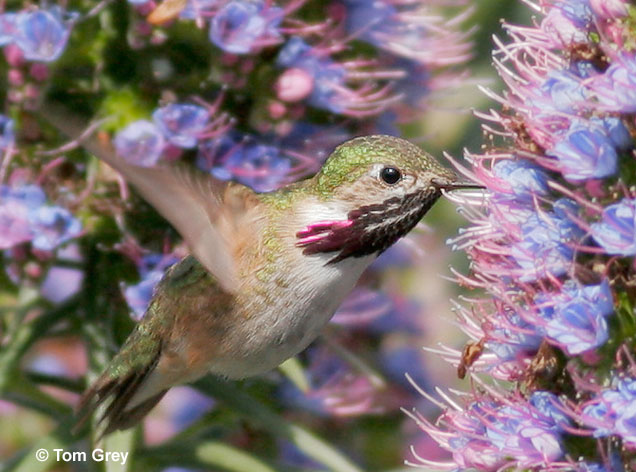
Scientific name: Selasphorus calliope
Length: 3.25 inches
Wingspan: 4.25 inches
Calliope Hummingbirds have the distinction of being the smallest bird in North America. These feathered sprites are green above, pale buffy or pale greenish below, and have a short, squared tail.
They also have shorter, straighter beaks than other hummingbirds and a pale mark behind each eye. Male Calliopes have rose-red streaks on their throats while females have fine, dark streaking.
Related: What is the state bird of Florida?
Calliope Hummingbirds breed in open coniferous woodlands from British Columbia to Utah and parts of central California. During summer and migration to and from Mexico, we can see Calliope Hummingbirds at flowering bushes and feeders.
They can also show up at feeders well east of their range and have become annual visitors to Florida and some other places. Perhaps to avoid being chased away by other, larger hummingbirds, Calliopes are pretty quiet and good at keeping out of sight.
If you see a tiny hummingbird suddenly sneak into the feeder, it could be a Calliope!
Key identifications:
- Small hummingbird with a squared tail and straight, fairly short beak.
- No rufous in its tail.
- Streaked throat.
Buff-bellied Hummingbird
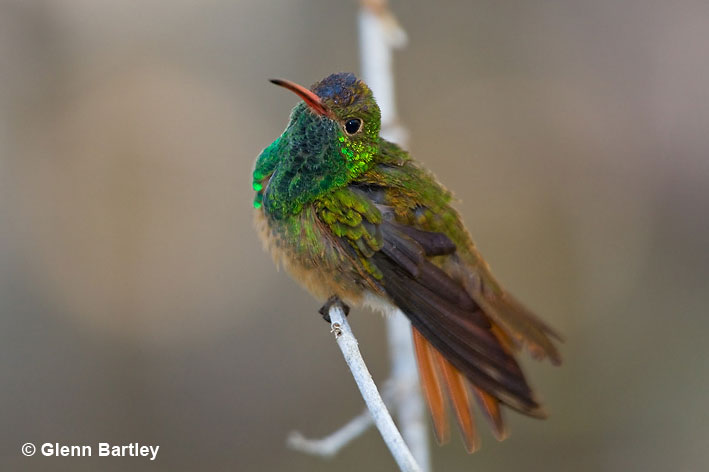
Scientific name: Amazilia yucatensis
Length: 4.25 inches
Wingspan: 5.75 inches
The Buff-bellied Hummingbird is a Mexican species that barely extends into the southern tip of Texas. It’s a common bird of subtropical woodlands and gardens, and also visits feeders. Like several other hummingbird species, feeders in the Gulf Coast region have helped the Buff-bellied Hummingbird expand its range east to Florida.
Although it doesn’t occur east of its normal range all year long, several birds do migrate to that area for the winter months.
Buff-bellied hummingbirds are medium-sized hummingbirds with green upperparts, a green head and throat, and a buff belly. Both sexes look pretty similar and also have red-brown tails, and a slightly curved red beak with a dark tip.
This species is bold and usually easy to see at feeders and flowering plants. Like other hummingbirds, in the early morning, Buff-bellieds also catch tiny insects in flight. Similar to other hummingbird species, they also build small cup nests out of spiderwebs and soft vegetation.
Key identifications:
- Red-brown tail.
- Buff belly and green throat.
- Red beak with a dark tip.
Broad-billed Hummingbird
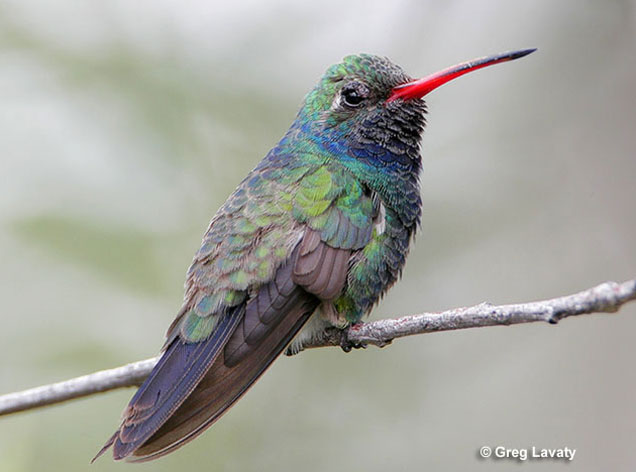
Scientific name: Cyanthus latirostris
Length: 4 inches
Wingspan: 5.75 inches
The Broad-billed Hummingbird is a small to medium-sized, distinctive hummingbird with green upperparts, a broad, forked tail, and a red beak with a dark tip. Males also have a violet-blue throat, and dark, blue-green underparts.
Females have grayish underparts, a white line going back from their eyes, and a dusky mask.
Broad-billed Hummingbirds occur from southeastern Arizona and adjacent New Mexico to Mexico. In the USA, they mostly live along streams on canyons. However, further south, we also see this hummingbird species in a variety of subtropical and tropical habitats.
Most of the birds that nest in the USA migrate south for the winter. However, some Broad-billed Hummingbirds have learned to migrate east to Louisiana and Florida.
Like some other western hummingbirds, they go there to take advantage of the many hummingbird feeders. This species is usually bold and easy to see, especially at feeders. However, they can also forage at a wide variety of flowering shrubs.
Key identifications:
- Dark blue-green underparts.
- Red beak with a dark tip.
- Females have dingy gray underparts and a pale line going back from their eyes.
Frequently Asked Questions
How many hummingbird species are there in Florida?
There are 12 hummingbird species in Florida. Several are rare visitors to the state and might not stay for long.
What time of year do hummingbirds come to Florida?
Hummingbirds come to Florida in spring and winter.
Do any hummingbirds live in Florida year-round?
The only hummingbird living in Florida year-round is the Ruby-throated Hummingbird.
Do hummingbirds need feeders in Florida?
Yes, hummingbirds probably need feeders in Florida during the winter months. They can also feed from flowers, but feeders have certainly helped a lot of hummingbirds survive the winter in Florida.
Read next: Birds of Florida | Hawks in FL | Owls in FL | Woodpeckers in FL | Ducks in FL

